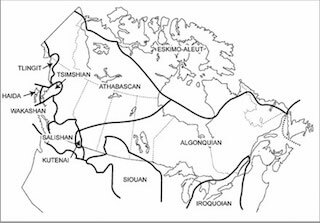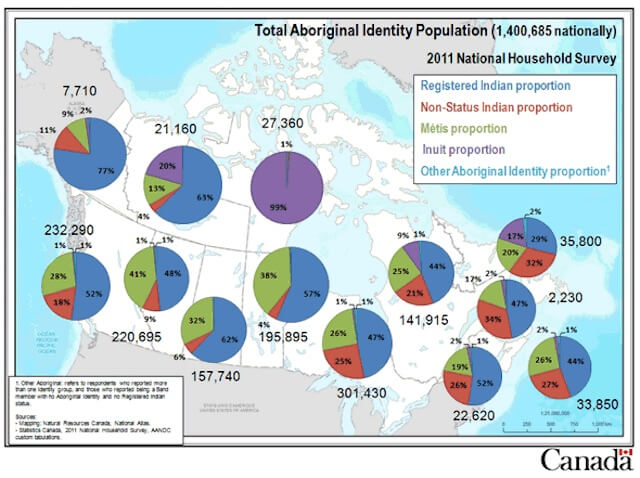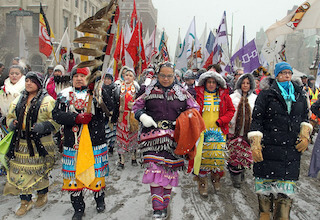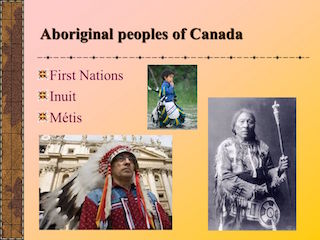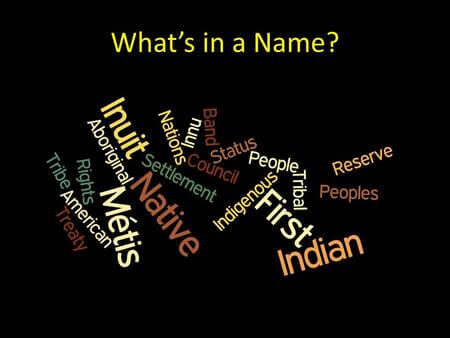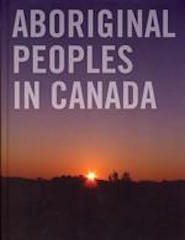Other Canadian Sites
"Aboriginal peoples" is a collective name for the original peoples of North America and their descendants.
The Canadian constitution recognizes three groups of Aboriginal peoples: Indians (commonly referred to as First Nations),
Metis and Inuit. These are three distinct peoples with unique histories, languages, cultural practices and spiritual beliefs.
More than 1.4 million people in Canada identify themselves as an Aboriginal person.
The characteristics of Canadian Aboriginal culture included permanent settlements, agriculture,
civic and ceremonial architecture, complex societal hierarchies and trading networks.
The Metis culture of mixed blood originated in the mid-17th century when First Nation and Inuit
people married Europeans.
The Inuit had more limited interaction with European settlers during that early period.
Various laws, treaties, and legislation have been enacted between European immigrants and
First Nations across Canada. Aboriginal Right to Self-Government provides opportunity to manage
historical, cultural, political, health care and economic control aspects within first people's communities.
Canadian Constitutional Documents
The terms First Peoples and First Nations are both used to refer to indigenous peoples of Canada.
The terms First Peoples or Aboriginals in Canada are normally broader terms than First Nations, as
they include Inuit, Metis and First Nations. First Nations (most often used in the plural) has come
into general use for the indigenous peoples of North America in Canada, and their descendants,
who are neither Inuit nor Metis. On reserves, First Nations is being supplanted by members of
various nations referring to themselves by their group or ethnical identity. In conversation this would be
"I am Haida", or "we are Kwantlens", in recognition of their First Nations ethnicities. In this Act,
"Aboriginal peoples of Canada" includes the Indian, Inuit and Metis peoples of Canada.
First Nations peoples had settled and established trade routes across what is now Canada by 500 BCEĐ1,000 CE.
Communities developed each with its own culture, customs, and character. In the northwest were the Athapaskan,
Slavey, Dogrib, Tutchone, and Tlingit. Along the Pacific coast were the Tsimshian; Haida; Salish; Kwakiutl;
Heiltsuk; Nootka; Nisga'a; Senakw and Gitxsan. In the plains were the Blackfoot; Kainawa; Sarcee and Peigan.
In the northern woodlands were the Cree and Chipewyan. Around the Great Lakes were the Anishinaabe; Algonquin;
Mi'kmaq; Iroquois and Huron. Along the Atlantic coast were the Beothuk, Maliseet, Innu, Abenaki and Mi'kmaq.
Countless North American Indigenous words, inventions and games have become an everyday part of Canadian
language and use. The canoe, snowshoes, the toboggan, lacrosse, tug of war, maple syrup and tobacco are just
a few of the products, inventions and games. Some of the words include the barbecue, caribou, chipmunk,
woodchuck, hammock, skunk, and moose. Many places in Canada, both natural features and human habitations,
use indigenous names. The word "Canada" itself derives from the St. Lawrence Iroquoian word meaning "village"
or "settlement". The province of Saskatchewan derives its name from the Saskatchewan River, which in the
Cree language is called "Kisiskatchewani Sipi", meaning "swift-flowing river." Canada's capital city Ottawa
comes from the Algonquin language term "adawe" meaning "to trade." Modern youth groups such as Scouts Canada
and the Girl Guides of Canada include programs based largely on Indigenous lore, arts and crafts, character
building and outdoor camp craft and living.
Aboriginal peoples, both historical and contemporary, in North America can be divided into 10 cultural areas:
Arctic, Subarctic, Northwest Coast, Plateau, Plains, Eastern Woodlands (sometimes referred to as the Northeast),
Southeast, Southwest, Great Basin, and California. Only the first six areas are found within the borders of what
is now Canada. Contemporary geopolitical borders in North America do not reflect (and often overlap) traditional
Aboriginal lands. For example, the Mohawk Nation at Akwesasne straddles both provincial (Quebec and Ontario) and
international (New York State) borders, as its existence predates the establishment of the international border in 1783.
National Aboriginal History Month
In 2009, June was declared National Aboriginal History Month, following the passing of a unanimous motion in the
House of Commons. This provides an opportunity to recognize not only the historic contributions of Aboriginal peoples
to the development of Canada, but also the strength of present-day Aboriginal communities and their promise for the future.
Every June, Canadians celebrate National Aboriginal History Month, which is an opportunity to honor the heritage,
contributions and cultures of First Nation, Inuit and Metis communities across Canada. Canadians are also invited
to celebrate National Aboriginal Day on June 21st each year.
Compiled by: Glenn Welker
This site has been accessed 10,000,000 times since February 8, 1996.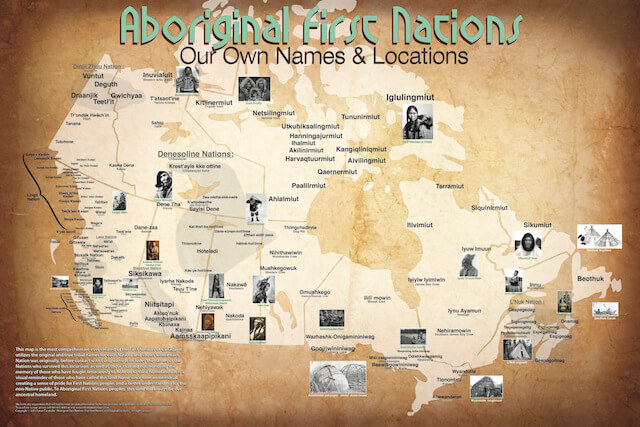
![]() Return to Indigenous Peoples' Literature
Return to Indigenous Peoples' Literature
ghwelker@gmx.com
